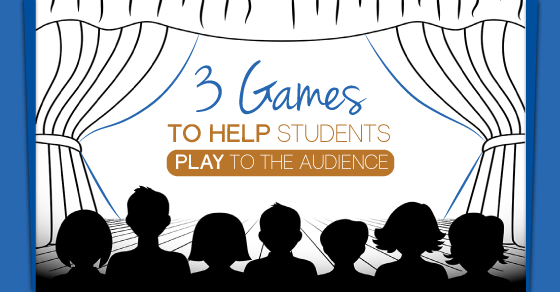Creating Your Own Commedia Lazzi
Commedia dell’arte is a style of theatre that was popular in Italy during the 1500’s. It was recognized for being comedic, improvised, and having clear elements:
- Stock characters including servants (zanni), masters (vecchi), and young lovers (innamorati), who were easily recognized by their movements, look, and mannerisms
- Performances based on scenarios with mostly improvised themes (generally either love, money, or food)
- Use of mime, movement, music, and masks to tell the story
- Lazzi, which are comedic physical “bits” or jokes within the story
Commedia dell’arte is a lot of fun for students to explore. They get to be funny and over the top, while working within the limits of their characters and the scene. The movements are exaggerated, melodramatic, and active. Each character willr eact differently to something occurring in a scene, depending on that character’s stock traits. However, no matter what character a student is playing, the goal is to make the audience laugh – you really can’t go overboard with commedia!
Lazzi, as mentioned above, are comedic physical “bits” or moments within story. They’re added to commedia performances to highlight a character. Traditionally, commedia performers would have lazzi memorized so they could insert them whenever needed. Audiences would instantly recognize lazzi because they’re physical, familiar, and funny. Physical bits and jokes are still used in modern theatre, film and television today! Think of silly “bits” that garner the canned laughter on sitcoms, such as:
- A butler saying “Walk this way” and the guests walk exactly the same way the butler walks.
- A phone or the doorbell rings, a character finds out it’s his/her mother, and frantically hides.
- Someone tries to hide by pretending to be a statue or putting a lampshade on their head.
- Someone eats a cob of corn or piece of watermelon like a typewriter, from left to right, and then snaps back to the beginning.
- Twins switching places to try to get out of a problem and then end up getting into bigger trouble than before.
How can you put together a lazzi?
First, you’ll want to learn more about the stock characters involved in commedia, which you can read about here.
Every commedia character’s lazzi will be different, even in a similar situation. For example, let’s say a character opens up a door and another character jumps out and yells, “Boo!” – a lazzi of surprise.
- An innamorata (the young lover stock character) might drop her handkerchief and faint to the floor.
- A servant character like Arlecchino ttrickster servant) might gasp and leap away into a back somersault.
- A master character like Pantalone (old miser) might clutch at his heart and pretend to have a heart attack from the shock.
All those reactions are recognizable and specific to the character. The most important thing is that the reaction has to be specific and over the top, with multiple steps. Pantalone can’t just drop to the ground – he might first start by jumping back, pausing and posing with a look of terror, then grab his heart, then start shaking, then fall to the floor, then call for help and go into great detail about the pain and fear he’s experiencing. Specific and over the top with multiple steps.
Try creating your own lazzi of surprise. Have students try the scenario with over the top actions and comedy as caricatures of themselves. Once they understand the concept of over the top movements and reactions, they can explore performing as a specific commedia character, or performing the same scene three times – as a master character, as a servant character, and as a lover character.
When creating your own scenarios, have the character do something mundane – brushing their hair, reading the newspaper, eating a piece of fruit – then SOMETHING HAPPENS! (Their hair gets caught in the brush, they read something shocking in the paper, they choke on a little bit of fruit…)
Come up with 5-7 reactions that occur one after another, getting more and more ridiculous. For example, with the hair-brushing scenario, the character might react the following way:
1. They realize the brush is stuck.
2. They try to gently untangle the brush, with no effect.
3. They pull on the brush harder, with visible pain.
4. They yank on the brush with both hands, panting from the effort.
5. They lay on the floor, pull on the brush with their hands and feet.
6. They call for a friend to come help, the friend enters but still can’t pull the brush out.
7. With the final pull, the brush comes free and either flies across the room, or takes the hair with it (either mimed or with a wig), or doesn’t come free and the character is resigned to leaving the brush stuck in their hair forever.
Remember, all movements and reactions have to be exaggerated. Don’t forget details like facial expressions and verbalizations!



